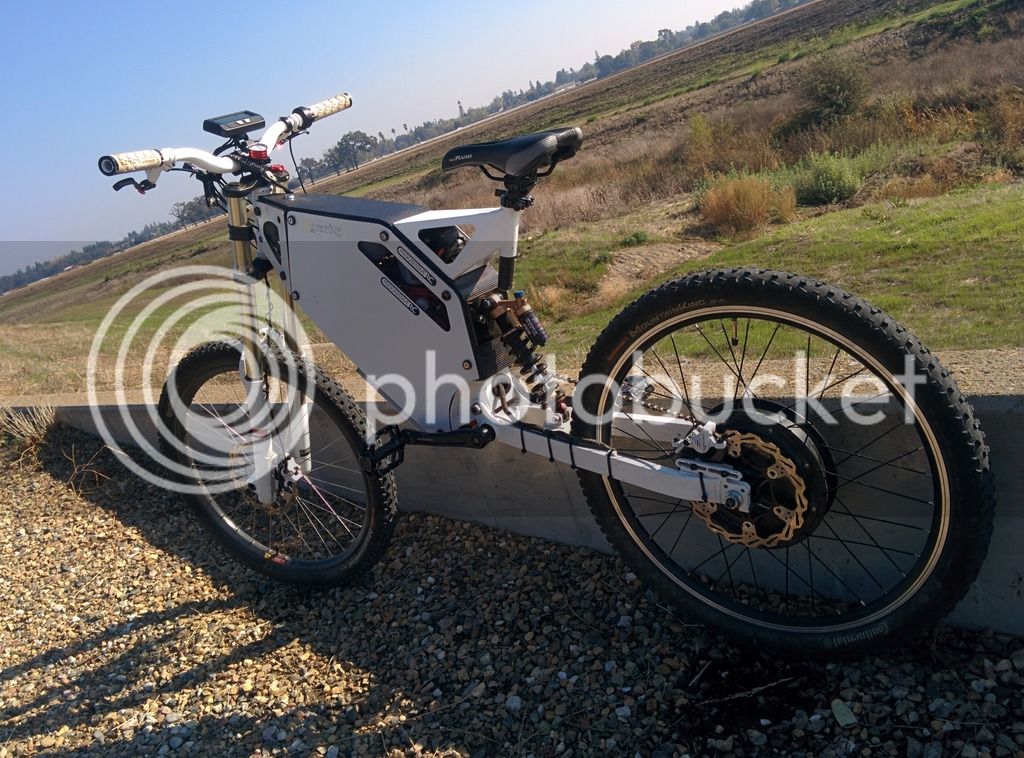Awesome! How long do you need with your bike from 0-100 km/h? I guess something like 10 seconds..?


I have tried myself on this to figure out the highest real speed I could get with 4kW motor.
P(Motor)=((A/2 x CW x D x v³)+(Cr x m x g x v)) x 1,11
P(Motor) = 4kW = 4000W =
4000
A = Stirnfläche des Objekts = face of the object =
around 0,6m²
CW = Luftwiederstandswert = Air resistance =
0,7
D = Dichte der Luft = Density of air = at 400 meters over the sea at 25 degree Celcius =
1,196 kg/m³
V = Geschwindigkeit = Speed = That´s what we want to calculate
CR = Rollwiederstandwert = Roll resistance = (downhill wheel with bad conditions) ->
41 Watt
m = Masse = Weight of Rider and Bike together = (65kg + 44 kg bike) = around
110 kg.
g = Erdanziehung = gravity =
9,81
Verlustfaktor = Dissipation Factor = 1,11 at efficiency
89%.
RED COLORE = Surce by google search
example motorcycle.
BLUE COLORE = already known, steady data and facts.
GREEN COLORE = different, not considently data
4kW = ((0,6/2 x 0,7 x 1,196 x v³) + (41 x 110 x 9,81 x v)) x 1,11
4kW = (0,25116v³)+(44243,1v)) x 1,11
4kW = (0,25116v x 0,25116v x 0,25116v + 44243,1v) x 1,11
4kW = 4510,015938Vv x 1,11___________
I /4510,015938
4000 / 4510,015938 = v x 1.11
0,8869148268 = v x 1,11_______________
I / 1,11
0,7990223656 = v
Im just not shure if this means 79,9 km/h.
Tell me if you have something to add.








